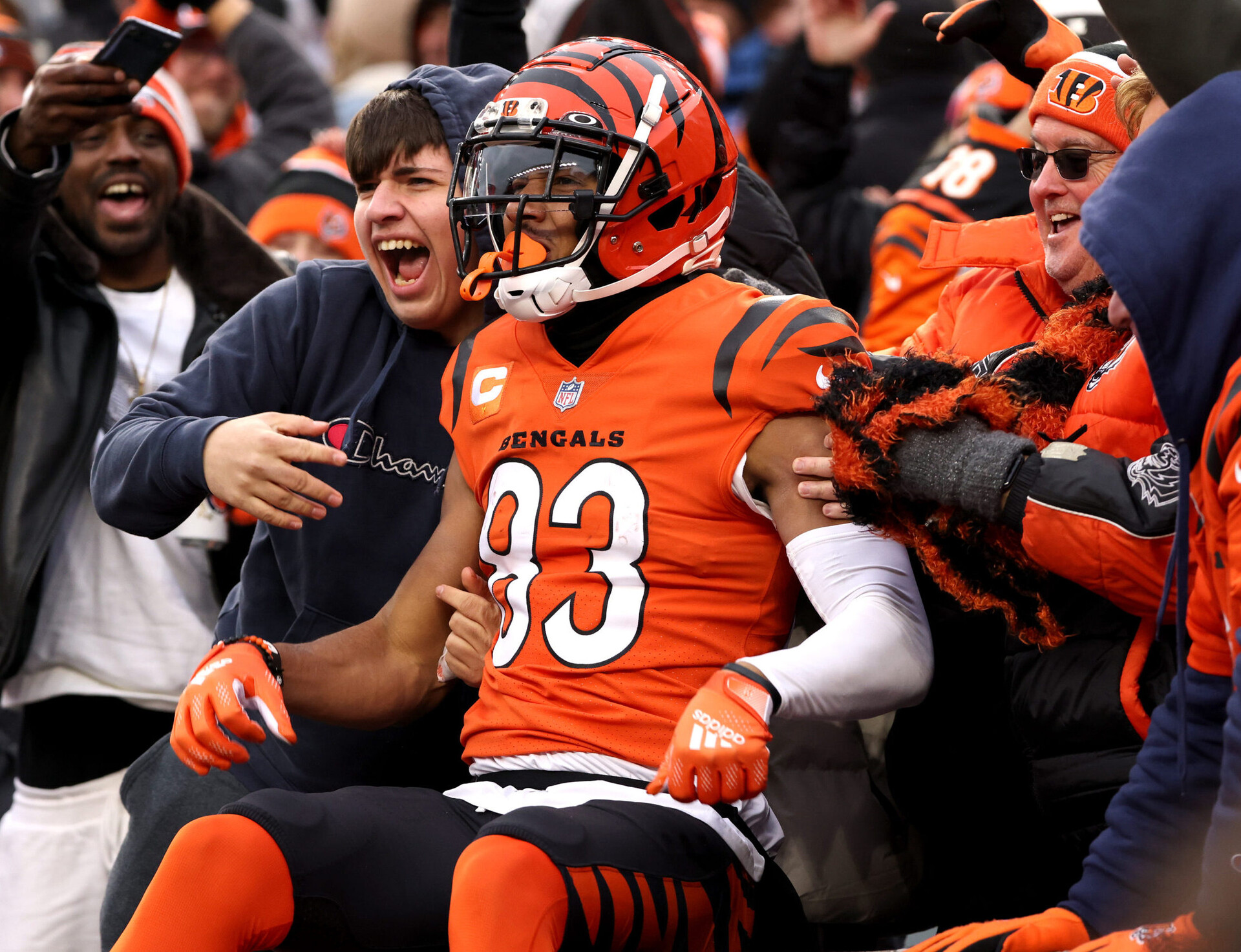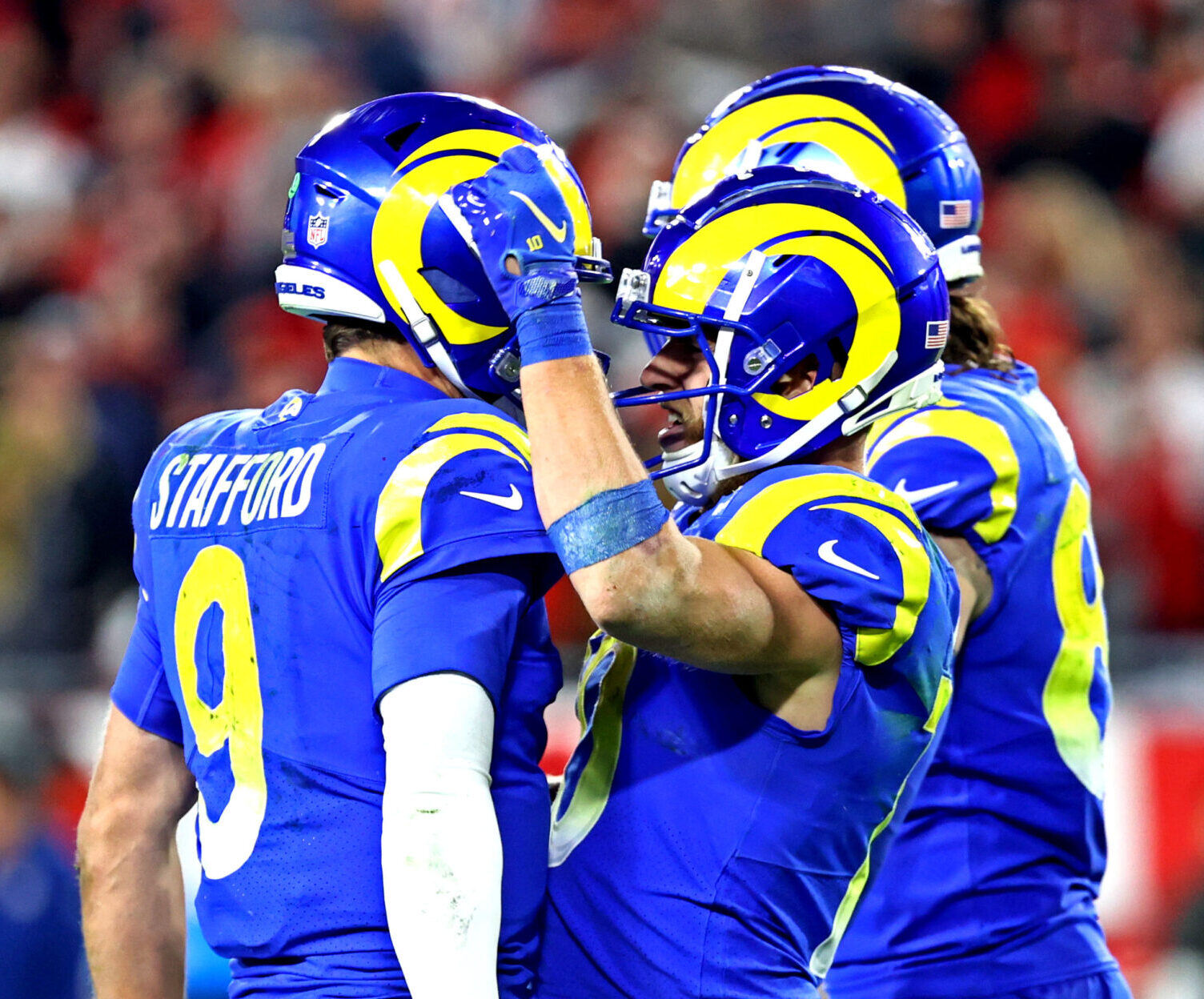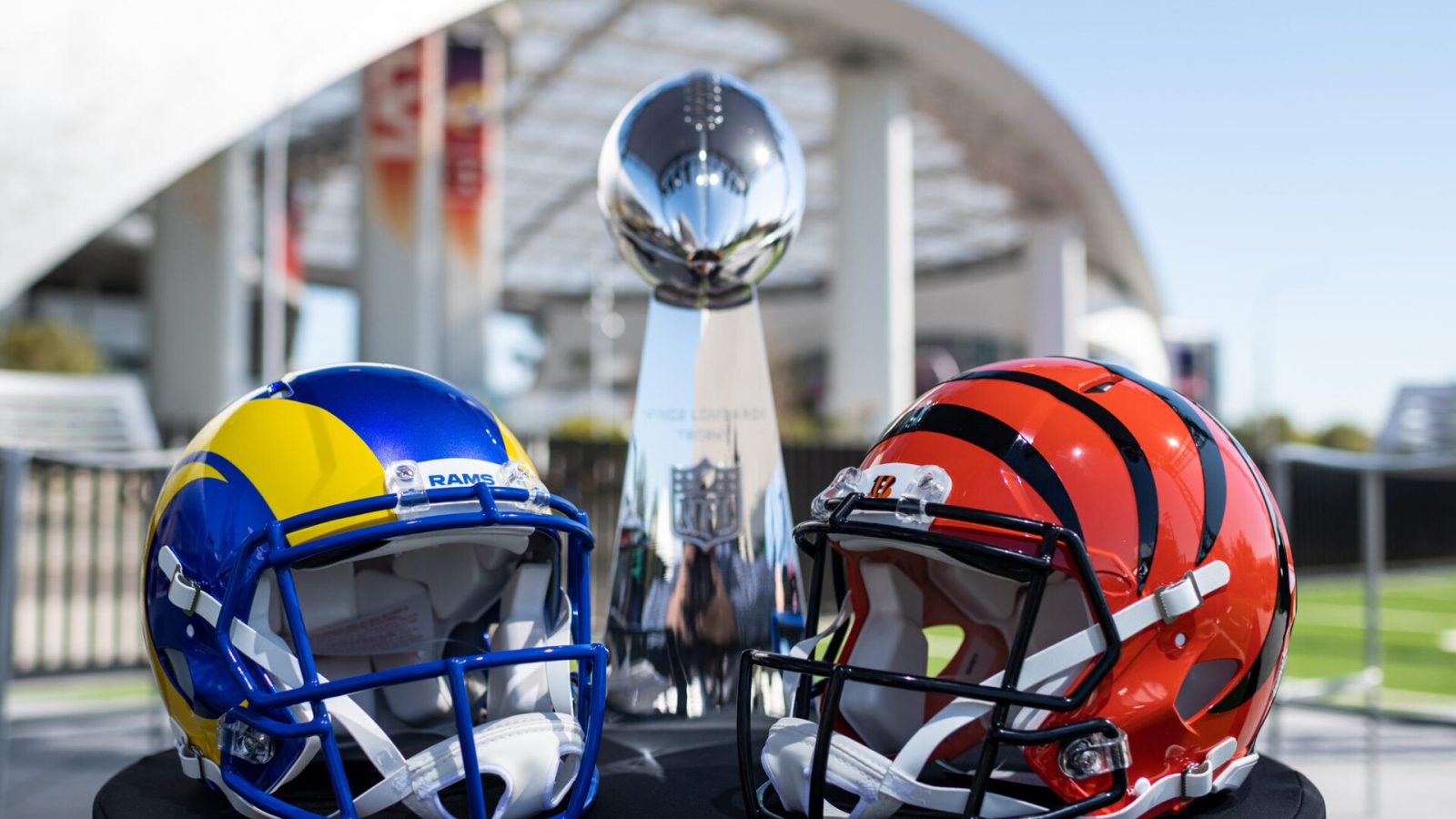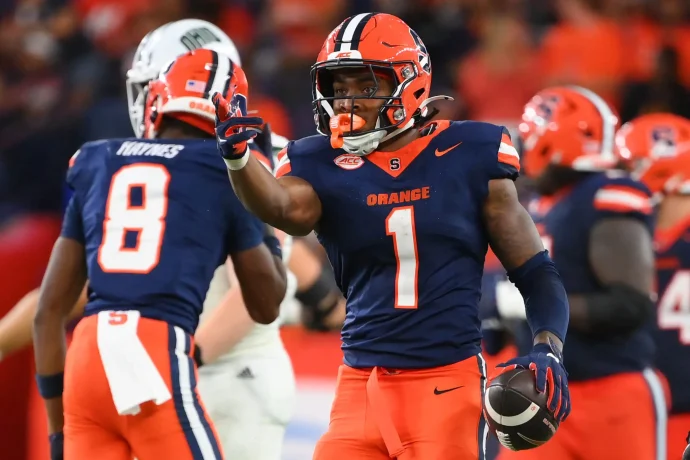Super Bowl props are now filling odds boards at sportsbooks from coast to coast in advance of Sunday’s matchup between the Los Angeles Rams and Cincinnati Bengals.
Throughout the week leading up to Super Bowl 56 in Inglewood, California, Props.com will offer up our five favorite Super Bowl props for each teams’ skill position group on offense, as well as our top five defensive, kicker/punter, and special teams props. We’ll also break down five game-specific props; best bets for player to score the first touchdown; and even our favorite cross-sport props.
Yes, consider us your one-stop prop shop for Rams vs. Bengals. So be sure to check back all week for comprehensive and (we hope!) compelling Super Bowl 56 betting coverage.
Next up: Our top five game-specific Super Bowl props.
Odds via PointsBet USA and updated as of noon ET on Feb. 10.
Time Of First Score

The prop: Will either team score in the first 6:30 of game time?
The odds: Yes -115/No -115
The Rams’ three playoff games took a while to get going, as the earliest score in any contest came with 8:01 left in the first quarter of the Divisional round at Tampa Bay. Thus, the Yes on this prop failed to hit that day by just 29 seconds.
The Bengals, on the other hand, gave up a field goal to the Raiders 5:37 into their Wild Card game and converted a field goal less than three minutes into their Divisional round contest at Tennessee. However, the first score in the AFC title game in Kansas City didn’t occur until nearly eight minutes had lapsed (a Chiefs touchdown).
Add it all up, and the No side of this prop has hit in four of these squads’ combined six postseason matchups.
What does the Super Bowl history book tell us when it comes to quick scores in the Big Game? Good question. Here’s how much time was on the clock when the first score was secured in the last five Super bowls:
Chiefs-Buccaneers: 5:10, 1st quarter (No)
49ers-Chiefs: 7:57, 1st quarter (No)
Patriots-Rams: 10:29, 2nd quarter (No)
Eagles-Patriots: 7:55, 1st quarter (No)
Falcons-Patriots: 12:15, 2nd quarter (No)
So, automatic play on the No, right? Maybe. Then again, immediately prior to Falcons-Patriots in Super Bowl 51, the Yes hit in four times in five years from Super Bowls 46-50.
Longest Score

The prop: What will be the longest score of Super Bowl 56?
The odds: Touchdown +110/Field Goal -140
As we’ve pointed out a few times in our Super Bowl props coverage this week, both the Rams and Bengals place-kickers have extremely strong and accurate legs. Throw in a domed stadium with no wind, and it wouldn’t be at all surprising to see a field goal split the uprights from 50 yards or more Sunday.
Of course, with two strong-armed quarterbacks slinging the pigskin to game-breakers named Kupp, Beckham, Chase, and Higgins — not to mention two opportunistic secondaries that aren’t afraid to take chances — who would be surprised to see a 60-plus-yard touchdown converted? Nobody. And don’t forget: Any touchdown counts, so a lengthy interception, kickoff, or punt return that goes the distance could put the field-goal side of this prop out of reach.
Focusing solely on the three postseason games Cincinnati and L.A. have played thus far, here’s how this prop played out:
Bengals vs. Raiders: Long TD 14 yards; long FG 47 yards
Bengals vs. Titans: Long TD 33 yards; long FG 54 yards
Bengals vs. Chiefs: Long TD 41 yards; long FG 52 yards
Rams vs. Cardinals: Long TD 7 yards; long FG 55 yards
Rams vs. Buccaneers: Long TD 70 yards; long FG 45 yards
Rams vs. 49ers: Long TD 44 yards; long FG 40 yards
Starting to understand why this prop is priced the way it is, right?
Largest Lead

The prop: 14.5 points
The odds: Over -115/Under -115
The Bengals’ biggest lead in the playoffs so far was 14 points, late in the second quarter of their Wild Card victory over the Raiders. Their largest leads in their subsequent playoff games were seven (at Tennessee) and three (at Kansas City).
In fact, Cincinnati has enjoyed an advantage of more than two touchdowns just once in its last nine games (a 41-21 beatdown of the Ravens in Week 16). However, prior to trailing the Chiefs 21-3 in the first half of the AFC Championship Game, the Bengals had faced a deficit of more than 14 points just three times all season (and only once on the road).
As for the Rams, they’ve played from ahead in each of their first two playoff games, opening up sizeable leads against the Cardinals in the Wild Card round (28-0) and Buccaneers in the Divisional round (27-3). They also held a 17-0 lead over the 49ers in the Week 17 season finale (although L.A. never led by more than seven points in the NFC title game versus San Francisco).
The last time the Rams trailed by more than two touchdowns in a game? Week 12 (Thanksgiving Weekend) at Green Bay, which was up 36-17 entering the fourth quarter.
And because you’re probably wondering, here are the biggest leads in the last 18 Super Bowls, starting with the most recent (Chiefs-Buccaneers last year): 22, 10, 10, 10, 25, 14, 10, 36, 18, 9, 18, 14, 13, 4, 12, 11, 10, 11.
So one team has held a lead of more than 14 points in just five of the last 18 Big Games. And only once in the last 20 Super Bowls — Nos. 47 and 48 — has it happened in back-to-back years.
Consecutive Scoring

The prop: Will either team score three unanswered times?
The odds: Yes -218/No +170
Call this one of the OG “new-age” props, which sprung to life in the early 1990s when Las Vegas sportsbook operators began to expand their Super Bowl betting menus by offering creative, outside-the-box props. Now a Super Bowl Sunday staple, this prop asks bettors to answer a pretty straightforward question:
Do you think at least one of the two Super Bowl participants will get on a role at any point during the 60-minute contest?
Remember the universal caveat regarding this prop: Extra-point and two-point-conversion attempts do not count. It’s all about whether a team will score three consecutive touchdowns, field goals, and/or safeties without the other team putting points on the board.
Looking back across three decades yielded some interesting trends on this prop. From Super Bowl 25 in 1991 (Bills vs. Giants) through Super Bowl 37 in 2003 (Buccaneers-Raiders), the Yes side cashed 12 times in 13 years. Since Super Bowl 37, though, the No side has been the play more often than not, cashing in nine of 17 games (including three of the last four).
As you might expect, there’s a correlation between the No on this prop and the game total: Six of the last eight times neither team produced three unanswered scores, the game stayed Under the total. But the flip side yields a different result. In fact, the last nine times the Yes hit on this prop, the game’s Over/Under is just 5-4.
What about recent form with these teams? Well, the Rams have scored three unanswered times in all three playoff games. And their opponent has done the same twice. Meanwhile, Cincinnati has done it in two of its three postseason contests. However, neither the Raiders, Titans, nor Chiefs posted three unanswered scores against the Bengals.
Number Of Players To Attempt A Pass

The prop: 2.5
The odds: Over +160/Under -200
This is always a popular Super Bowl prop, with recreational bettors usually pounding the Over. Why? Because unless a starting quarterback gets injured, the only way for the Over to hit is with a trick play. And who doesn’t want to see a trick play in the Super Bowl (and make some money off it at the same time)?
Just one problem: When it comes to the Super Bowl, coaches are usually more conservative than Sean Hannity.
You have to go back to the Eagles-Patriots shootout in Super Bowl 52 four years ago for the last time a non-starting quarterback threw a pass. Interestingly, it happened twice in that contest: Patriots wide receiver Danny Amendola misfired on a pass intended for quarterback Tom Brady, while Eagles tight end Trey Burton connected with QB Nick Foles on the now-famous “Philly Special” touchdown pass prior to halftime.
The Over on this prop also hit the previous year, when New England wideout Julian Edelman threw an incomplete pass against the Falcons. And in Super Bowl 48, Seattle backup QB Tarvaris Jackson relieved Russell Wilson in a blowout of the Broncos and misfired on his only attempt late in the fourth quarter.
Those are the only three instances in the last 15 Super Bowls in which more than two players threw a pass.
Barring an injury to Cincinnati’s Joe Burrow or Los Angeles’ Matthew Stafford — or a blowout that leads to one of their backups taking the field — the trend of fewer than three players attempting a pass is likely to continue in Super Bowl 56. Because only one non-QB has thrown a pass for the Bengals this year (wideout Tyler Boyd). Two Rams have done it: punter (and former high-school QB) Johnny Hekker and wide receiver Cooper Kupp.





